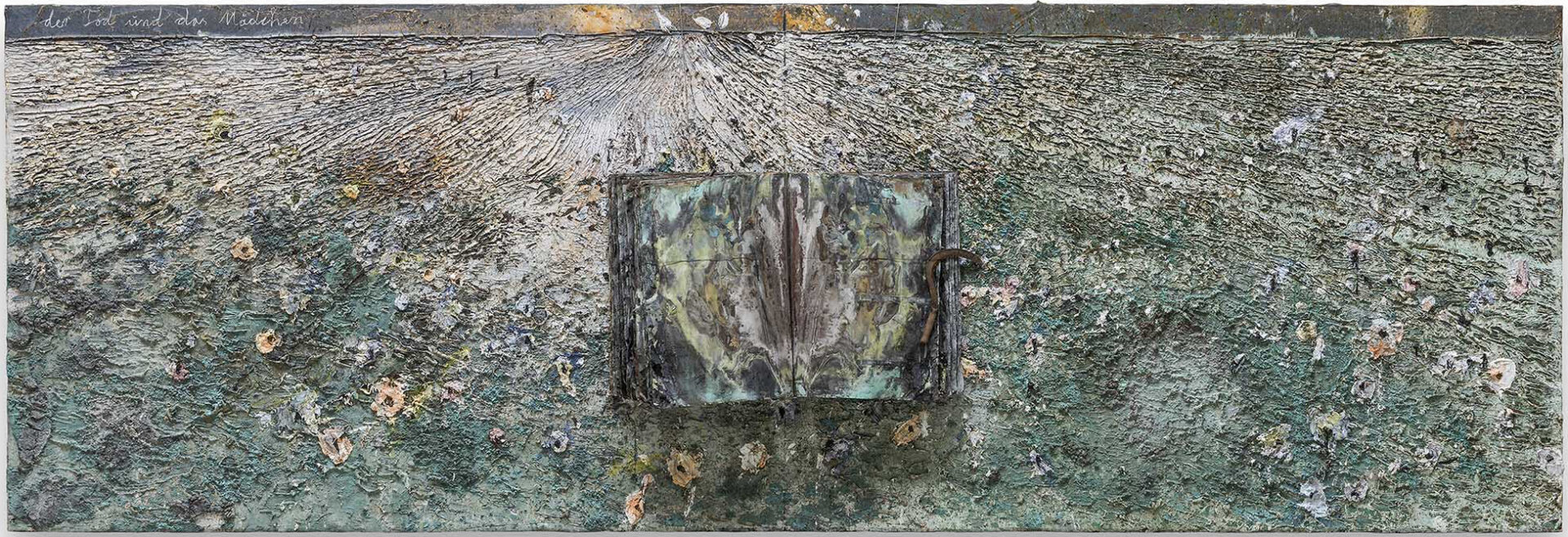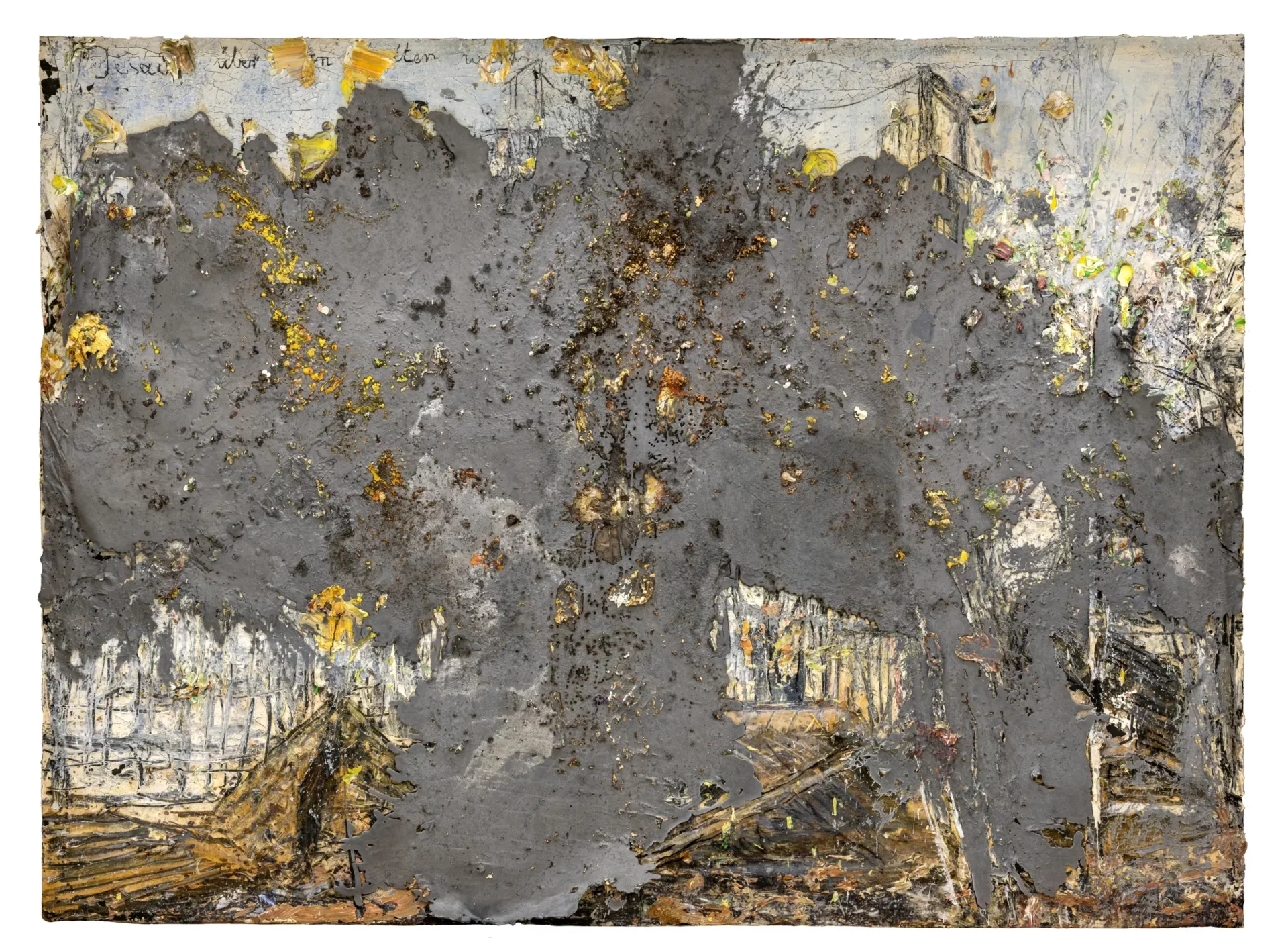“I think in pictures. Poems help me with this. They are like buoys in the sea. I swim to them, from one to the other; in between, without them, I am lost “1 . Kiefer’s own words help us to understand works full of poetry, mythology and a wide range of cultural, literary and philosophical allusions, from the Old and New Testament to the Kabbalah, Nordic mythology and the poetry of Baudelaire, Jean Genet and Paul Celan.
Born during the last months of the Second World War, Kiefer reflects on Germany’s post-war identity and history, grappling with the national mythology of the Third Reich. Merging art and literature, painting and sculpture, Kiefer addresses the complex events of history and the ancient stories of life, death and the cosmos. Kiefer’s work includes paintings, vitrines, installations, artist’s books and a variety of works on paper such as drawings, watercolours, collages and photographs. Kiefer uses materials as varied as lead, cement, glass, pieces of fabric, tree roots and burnt books.
Kiefer’s work has been exhibited in many prestigious institutions including the Louvre and the Pompidou in Paris, the Metropolitan Museum in New York, the Guggenheim in Bilbao, the Royal Academy of Arts in London, the Beyeler Foundation in Basel and the Hermitage in St. Petersburg.
The Hortensia Herrero collection includes three large works that are exhibited in the main hall of the former Valeriola Palace, now converted into the Hortensia Herrero Art Centre. Two of these works, “Böse Blumen” (Evil Flowers) (2012-2016) and “Der Tod und das Mädchen (Death and the Maiden)” (2018), include a characteristic lead book that appears in many of Kiefer’s works. As Nobel laureate Orhan Pamuk says, “it is almost as if Kiefer’s books are telling us to look beyond what words represent and signify, to notice instead their texture and the connections they form. This is like looking at a wall and being struck by its overall feel rather than the individual bricks that compose it 2 .
The other work in the collection, “Walhalla” (2015-2017) also features another characteristic of Kiefer’s art, the pouring of lead onto paintings depicting landscapes. In doing so, Kiefer unites the two trends that have marked the development of art in the last century: figuration and abstraction. Kiefer recounts how this technique came about in a kind of diary he kept in 2017 during an exhibition at the Thaddaeus Ropac gallery in Paris, where this work was acquired: “yesterday poured lead. on several old pictures you no longer wanted to even look at. unlike before, you laid the paintings on the floor without anger, without despair, and poured the burning hot lead on them. no cause for despair any longer, for you know: at some point something will come of it; indeed, you count on the disappointment from the outset. would the result be any different, would the lead flow any differently if the destructive act were performed in rage and not deliberately?”3. The result is truely a work of great beauty that condenses the entire inner world of this artist, who is essential for understanding 20th and 21st century art


